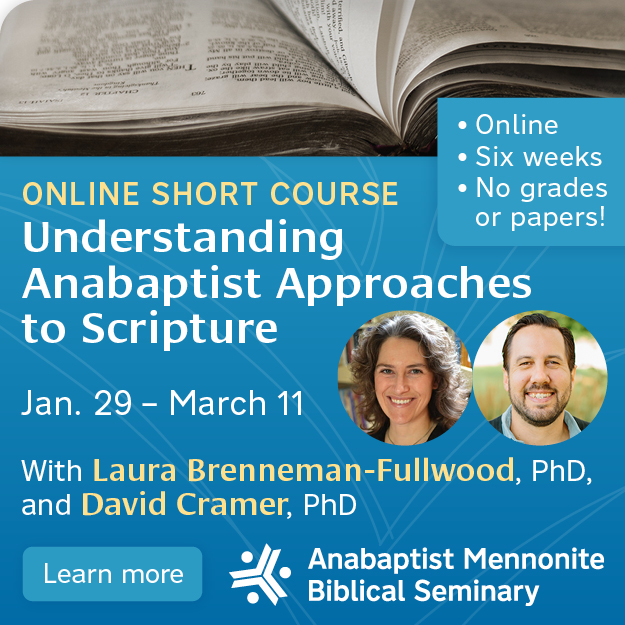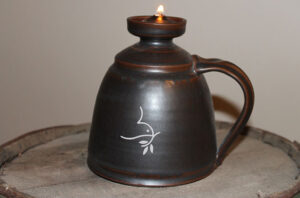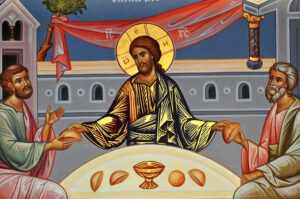It is nothing new to say that Winnipeg and southern Manitoba boasts an abnormally high concentration of Mennonites, although I suppose the Mennonites don’t boast. And given our historical and ongoing tension with how to respond to issues of peace and violence, it was also no surprise that more than a few eyebrows were raised at the unveiling of the Winnipeg Jets’ new logo. The association with the Jets’ new logo and the Royal Canadian Air Force (RCAF) are, of course, undeniable.
I want to demonstrate a point about how violence is perceived in the Mennonite church and, I would also argue, how violence is perceived in our culture at large. Taking aim at this logo for its implication in the violence of militarism is at best a distraction to what any serious conversation about peace and violence needs to be about in our contemporary context.
Two types of violence
I am convinced there are at least two frameworks for understanding violence. The first form of violence—let’s call it Type-A—is what will come most clearly, and probably viscerally, to our minds. At the question of violence, we will likely be drawn to an image or story from memory that created a sort of traumatic break with what we consider a normal or “peaceful” life.
A couple of months ago I encountered a man who had been jumped on my street by several other individuals. The man escaped the altercation and continued down the street, where I met him. As I looked up, having not seen the fight itself, I saw the strange and striking appearance of bright red blood flowing from his head. This experience created a clear break with the rhythms of an average day, at least for me. This is one very clear and also accurate understanding of violence.
The second understanding of violence—Type-B—is sort of inverse to the first. Rather than encountering an expression that creates a break with the rhythms of life, these expressions of violence form part of the very structure of normal or “peaceful” life. For example, someone caught in an abusive relationship might not know how to function outside of the “normalcy” that abuse seems to offer. While those outside of this relationship could clearly name the violence within it as Type-A, it is, of course, another matter for the person who has been formed in such an environment.
Violence and where you live
A superficial look at the online resource, Winnipeg Crimestat, will show that I live in one of the most Type-A violent areas of the city. I don’t deny this fact and understand there is much work to be done in response to this reality. I want to create a space, however, to consider the structure that undergirds the normalcy or apparent “peacefulness” of other neighbourhoods in Winnipeg.
One of the most effective means of creating control over Type-A violence is to erect ways of excluding groups and individuals deemed threatening. After all, violence begins with what is threatening, doesn’t it?
And what is the basic gauge of how much Type-A violence a community experiences? I would argue that property values create one prime indicator in how residents perceive the presence—or absence—of Type-A violence.
So how does one go about protecting and growing property values? In Winnipeg’s past, one example was the active discrimination against First Nation homeowners, as their presence was considered a threat to other property owners.
There are, of course, simple acts of placing “undesirable” tenancy applications at the bottom of the list for more “desirable” rental properties. When my wife and I were first married, the rental company tried to actively discourage us from renting in our desired location. Apparently, we were actually “too good” to live in a space that was being reserved for another segment of the population.
What is the result of these measures and procedures? It means a limited opportunity for anyone who cannot afford to live in a “peaceful” neighbourhood. Who are those who cannot afford such neighbourhoods? It is those who already have limited resources in other areas of life: mental illness, long-term disabilities, unstable home-life, or new immigrants without language skill or education. Who are the ones most prone to be victims and perpetrators of Type-A violence? The same people I just listed.
Violence and the Jets’ new logo
What does violence and where you live have to do with the Winnipeg Jets’ new logo? A logo is a central and concentrated form of communication, maybe even the essence of it. However, in the sports world, logos have what I would call an equivocal value. They are all trying to communicate the same thing. A logo simply attempts to create a particular imagination that will leverage various advantages like inspiring the players or creating a marketable product.
One particular form of advantage is the rallying of fans. So the Winnipeg Jets are banking on a cultural and historical association with the RCAF that will draw on such qualities as passion, commitment, excellence, loyalty and power. The Jets are indeed trying to borrow capital from the currency of the RCAF.
But as the Jets borrow from the RCAF logo, it must be observed that the military logo actually incorporates our national logo: the Maple Leaf. It is important to peal back the layers—or logos, in this case.
What is the function of logos? They attempt to concentrate a message, but in concentrating they also distract. A logo is meant to guide you into a particular realm of imagination that may—or may not—have anything to do with the actual structure or supports on which the logo is affixed, in the same way product branding of an automobile using a scantily clad young woman has nothing to do with transportation.
Once you are in a particular realm of imagination, your actions become formed and developed in a particular way. So, returning to my illustration about neighbourhoods, in Winnipeg most people become convinced of the “logo” that represents the place they live as well as the places they do not live: Tuxedo, Spence, Island Lakes, North End or North Kildonan. The acceptance of these logos defines such things as where we live, how we view people or where we travel. Logos attempt to create a particular mental and physical space in which our thoughts and actions are heavily influenced, even structured.
In conclusion
As I said at the beginning, any criticism of the Winnipeg Jets’ logo as unnecessarily promoting a culture of violence is premature at best, and, in the end, a distraction. In itself, this criticism becomes a trading in logos that share in the common imagination that we have a superior power on our side.
We must, instead, learn to describe the structure that supports particular logos and understand why they have currency for their intended audiences. To simply try to distance ourselves from Type-A violence is often a recipe for supporting a structure of Type-B violence. The important question to be asked in this discussion is whether we can identify what it is that gives the structure behind the logo its capacity to form and capture imaginations.
Perhaps the answer is simple and predictable: The motivating power behind the value of logos—whether representing neighbourhoods, nations, military units or professional sports teams—is the presence and movement of money. Ultimately, it is the presence and movement of currency in today’s economic model that sustains and expands the value of all the entities that are represented by their own logos. But isn’t money itself a logo? If so, what is behind it?
In any conversation about peace and violence today I think this is where things get interesting . . . and important.
David Driedger is associate pastor at First Mennonite Church, Winnipeg. Works that influenced the author’s thinking around violence and economics include Violence: Six Sideways Reflections by Slavoj Zizek, Picador, 2008; and Theology of Money by Philip Goodchild, Duke University Press, 2009.








Leave a Reply
You must be logged in to post a comment.